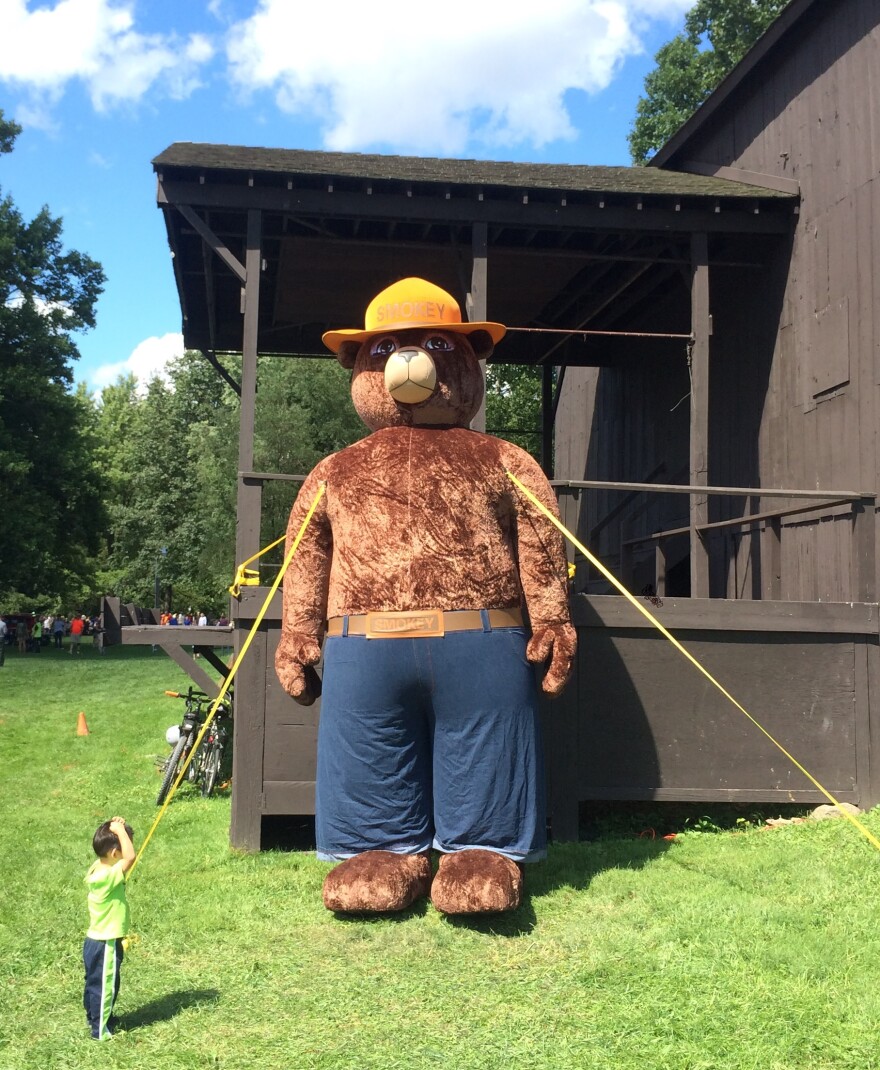Northeast Ohio has not one, not two, but three park systems that comprise about 70,000 acres of land – and almost 10 times that is protected throughout the state.
Listeners have asked our "OH Really?" project how these parks got started. WKSU’s Sarah Taylor and Kabir Bhatia answer some of their questions.
The first comes from a math teacher at GlenOak High School, Matthew Brown, who asks, “when and through whose efforts and generosity were the MetroParks systems created?”
For the Cleveland MetroParks, it started with William Stinchcomb. He was a surveyor for the City of

Cleveland in 1895, and after lobbying for a park district and working his way up through city government, he eventually became the consulting engineer for what would become the park district board. There, he hired the Olmsted Brothers, well-known landscape architects whose father had designed Central Park. They immediately put together plans for what we call the Emerald Necklace.
Finally, in 1917, Stinchcomb convinced the state legislature to authorize a levy to fund the park district. A few years later, they got their first donation of land for what would become the Rocky River and Big Creek reservations. Today, Cleveland Metroparks is made up of about 23,000 acres.
As for the Summit MetroParks, they’re in Summit County and started out as the Akron Metropolitan Park District. They have more than 14,000 acres and were formed just about the same time as the Cleveland parks.
In 1925, F.A. Seiberling, the co-founder of Goodyear, was named commissioner and he also hired the Olmsteds to design the park. That summer, they got their first land donation of a plot at Merriman Road and N. Portage Path, which today is called Courtney Park and is marked by a boulder and bronze plaque.
Seiberling is a familiar name when it comes to parks, which leads to the next question from Brandon Smith, who lives in Macedonia.

The CVNP
“Growing up in the Greater Cleveland area, I knew a lot about the MetroParks, but didn’t know a lot about the Cuyahoga Valley National Park until I went to the University of Akron. I would see the signs along Route 8, but as a native Clevelander, I feel like a lot of people are in my situation.”
Jennie Vasarhelyi, Chief of Education at the CVNP, has the answer.
“In the 1960s, the state had looked into creating a park and realized it was beyond the scope and scale that could be a state park. And that’s when the federal government got involved thanks to Congressmen John Seiberling from Akron and Ralph Regula from Navarre. In this national park, every acre has somehow been touched by development. This valley had hundreds of small farms, there were industries, there were two paper mills, strip mining occurred; our job has been to do a lot of work to rehabilitate historic structures and then also to try to restore a healthy ecosystem. So this park is a little different than just putting up a boundary and saying ‘we’re done.’”
There are still people living in and around those boundaries.
“This was a community and still is a community. Land acquisition has been a big part of establishing this park. And many times, people who had lived in the valley ended up selling to the National Park Service during a time period when the land acquisition felt very aggressive. It was hard for the community and that has some lingering impacts.”
The CVNP was formed in 1974.
How much parkland is there statewide?
Another listener, Sandy Varndell of Medina, submitted this question: “I’ve often wondered how much of Ohio is protected by park systems?"
The Ohio Department of Natural Resources, which was created by the state legislature in 1949, owns and manages more than 640,000 acres of land in the state. They protect natural resources and oversee recreational opportunities these resources provide.
On that acreage there are 136 state nature preserves, 150 wildlife areas, 21 state forests, and 74 state parks. The state has invested more than $230 million in parks—updating camping facilities, renovating cabins and improving lodges. It wants to keep adding to the trails in the state parks. Right now there are more than 5,000 miles of trails.
ODNR also oversees more than 60,000 miles of inland rivers and streams, 451 miles of Ohio river, and on Lake Erie 2.29 million acres.
Sandy also wondered how much land is protected by land conservancies and other nature conservancy groups. There are dozens of conservancy organizations in the state that work to protect land and water. ODNR oversees the water-related conservancies but according to public information office Eric Heis, the Ohio Department of Agriculture (ODA) now oversees land conservancies. ODA also oversees each county's soil and water conservation district and a farmland preservation program meant to strengthen food and agriculture, which is the number one industry in Ohio.
Who pays the bills?
A related question from an anonymous listener asks "Who pays for conservation in Ohio? Who protects wildlife and pays the bills? Are hunting and fishing license sales falling?"
Conservancy districts are funded through tax assessments under the Ohio Conservancy Law that was passed in 1914 after the Flood of 1913, one of the greatest natural disasters in Ohio history -- according to the Ohio History Central website.
Regarding wildlife, protecting it is the responsibility of the ODNR’s Division of Wildlife, which receives 95 percent of its funding through the sale of licenses, permits, federal reimbursements and donations.
Fewer people are buying hunting and fishing licenses, but the state has tried to make it easier and offer more convenient options to encourage these purchases.
Eric Heis said the current biennial budget being considered in Columbus puts the ODNR budget at a total of $400 million dollars. The bulk of that comes from programs and user fees. Heis said the state's general revenue fund supports 29 percent of the ODNR budget or about $134 million dollars.












